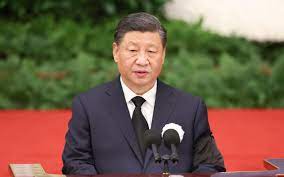Sun Tzu, competition with China and the art of acquisition
Twenty acquisition experts argue that the US can’t beat China at its own centralized, top-down game – but we can harness American innovation in new ways.
By CHRISTOPHER ZEMBER, DINESH VERMA and BILL ROUSE
This September, 20 leading experts on defense acquisition gathered for a workshop on how the US can best compete with China. Convened by the Acquisition Innovation Research Center at the Stevens Institute of Technology, the group took inspiration from the iconic Chinese work on strategy, Sun Tzu’s Art of War. For their recommendations, read on.
Sun Tzu said, “If you know the enemy and know yourself, your victory will not stand in doubt.”
Recent headlines have touted Chinese triumphs ranging from the launch of the first non-US supercarrier to how China is “winning in Asia” both diplomatically and economically. Most Americans see China as a major threat, with increasingly negative views of China and its aspirations — but despite past pledges to ‘pivot to the Pacific,’ real focus on China is a recent thing.
It was not until the 2018 National Defense Strategy that the US shifted its strategic emphasis to great power competition with China (and, secondarily, Russia). By contrast, China has viewed the US as their primary adversary since at least 1999, designing their strategy specifically to counter the US, learning from our strengths and exploiting our weaknesses.
Ironically, the Pentagon has a tendency of chasing centralized approaches that look a lot like Communist top-down planning, when instead we should pursue more bottom-up innovation in line with American democracy.
Rather than trying to imitate China, we should embrace and accentuate our unique values and assets: people, diversity, agility, adaptability, decentralization, and the ability to operate in ambiguity. Indeed, Sun Tzu advised as much: “Do not repeat the tactics which have gained you one victory, but let your methods be regulated by the infinite variety of circumstances.”
By focusing on the unique attributes of diversity and adaptability in American culture, society, and our democratic system, we can out-maneuver an adversary operating under top-down, centralized and rigid control.
Our workshop offered a few key recommendations relevant to defense acquisition:
Read Also:
Don’t confuse means with ends. Above all, metrics should not be driven by what we can easily measure – like the proverbial drunk looking for his keys under the lamppost because that’s where he can see, even though he actually dropped them in the dark. First the Defense Department must clearly understand: “what results do we seek?” Then, DoD must translate those results into requirements, clearly communicate its desired outcomes, incentivize those outcomes in well-designed source selection criteria, and give industry leeway to invent innovative ways to achieve them. Only this approach will enable us to embrace the agility and ingenuity of the American industrial base.
Ensure economic objectives are integrated into our acquisition strategy and operations. This requires DoD to engage more regularly at a working level with other cabinet departments. China is waging economic warfare – in fact, it’s central to their defense strategy. While we should not fully reciprocate, acquisition personnel need to understand economic dynamics at all levels, from defining requirements, to developing new technologies, evaluating proposals from industry, writing contracts, or managing programs.
Integrate differing views of portfolio management. Last year, the Pentagon shifted from a program-centric approach to a portfolio-based approach to acquisition. But portfolios are defined differently whether we’re speaking of budgets, requirements, or industry investments. Officials need to better understand the nuances of these different definitions and approaches. The AIRC is pursuing a new project to explore these nuances across the public-private ecosystem.
Sun Tzu said, “Water, in its natural course, runs away from high places and hastens downwards. So, in war, the way is to avoid what is strong and strike at what is weak.”
In complex processes and bureaucracies, we often fixate on the things we cannot change. Instead, like water, we should follow the path of least resistance. In acquisition innovation, there is no final victory, only continuous pursuit of progress.
Christopher Zember has served as both a government and corporate executive, and has held a variety of academic positions. He writes here as an Acquisition Innovation Research Center fellow at the Stevens Institute of Technology.
Dinesh Verma is a professor in the School of Systems and Enterprises at Stevens Institute of Technology, and Executive Director of the Systems Engineering Research Center and Acquisition Innovation Research Center. He was the founding Dean of the School of Systems and Enterprises.
William Rouse is a research professor in the McCourt School of Public Policy at Georgetown University and professor emeritus in the School of Industrial and Systems Engineering at Georgia Tech. He serves on the Research Council of the Acquisition Innovation Research Center and the Systems Engineering Research Center.
Credit: Breaking Defense




